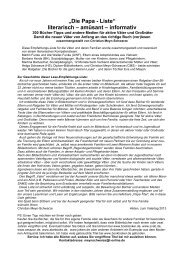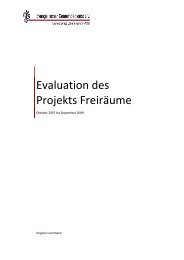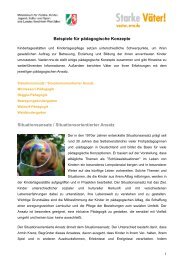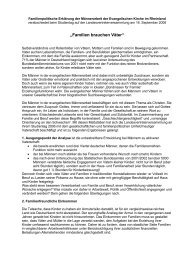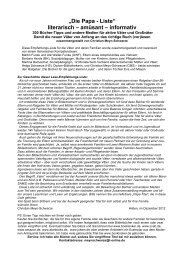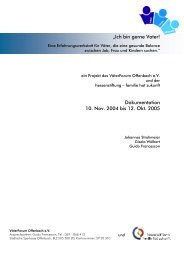LIBRARY
LIBRARY
LIBRARY
- No tags were found...
You also want an ePaper? Increase the reach of your titles
YUMPU automatically turns print PDFs into web optimized ePapers that Google loves.
offer patients the best possible care, even if they have yearsof experience.Many doctors focus more on conversations with fellowphysicians — “expert opinions” — than on medicalliterature when deciding patient care, says April AdamsPace, education coordinator for the library. Her job is tohelp medical students, residents and physician assistantsincorporate literature into that process — sorting throughquality study databases, interpreting results, knowingcurrent best practices and applying them to patient care.“I THINK LIBRARIANS USUALLYARE AHEAD OF THE CURVE WHENIT COMES TO USING ALL THERESOURCES WE HAVE AVAILABLETO HELP PEOPLE.” — Judith MercerOne popular tool, for example, is DynaMed, a websitethat posts daily updates of new medical studies andrates them based on quality of research methods.“It’s showing users how much they cantrust that evidence,” Mrs. Pace says.EVMS librarians also serve onthe school’s institutional reviewboards, helping researchersgather statistics and followcorrect federal regulations foranimal and human researchtrials. Two mornings aweek, they accompanythird-year medical studentsand residents duringtheir pediatric rounds atCHKD. If they detect anyuncertainty about patientcare, they will searchthe medical literaturefor information that may help guide treatment decisions.They then teach medical students how to locate and usethat kind of data themselves.“We show them the impact of applying literature in aclinical setting,” Mrs. Mercer says. “We have a chance totouch every third-year medical student here and contributeto patient outcomes.”On the state level, library staff work closely withmembers of the Joint Commission on Health Care(JCHC), the group that develops proposed legislation forthe General Assemblyeach year. D ut ie sinclude teaching JCHCstaff members howto use the library’selectronic resourcesand going to Richmondonce a year to lead acourse on accessingall current databases.They also are availableto answer questions,order requested materials and pass along information onparticular topics or issues.“We are their library,” Mrs. Mercer says. “We doeverything we can to support their work.”The same goes for educators at Virginia’s primary andsecondary schools. Through a partnership with the statedepartments of health and education, EVMS createdHealth Smart Virginia, a website that covers healtheducationrequirements under the state’s Standards ofLearning program. The site breaks down informationby health topic and grade, helping teachers plan lessonsfor elementary-, middle- and high-school students. “It’sa fantastic resource for teachers, and really for the entirecommunity and beyond,” Ms. Smith says.In short, adapting to the computer age hasn’t been verydifficult for the library. “I think librarians usually are aheadof the curve when it comes to using all the resources wehave available to help people,” Mrs. Mercer says. “Thetechnology may have changed, but that central missionhasn’t — and it never will.”For more about the library, visit www.evms.edu/magazine.<strong>LIBRARY</strong>WWW.EVMS.EDU FALL 2010 21



